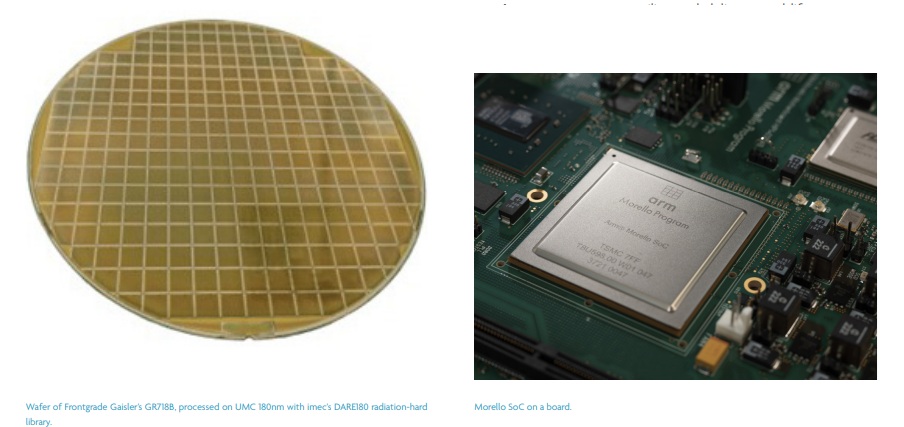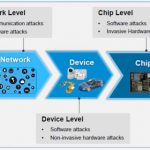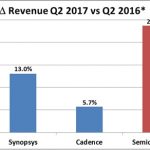I had the pleasure of being able to attend the CDNLive event held in the Boston, MA area last month and I was pleasantly surprised to see that Cadence highlighted Silicon Photonics as one of its Keynote topics. MIT Professor Duane Boning gave an excellent overview of the current state of silicon photonics and why he believes it is time… Read More
 imec on the Benefits of ASICs and How to Seize ThemIn an era where product differentiation increasingly depends…Read More
imec on the Benefits of ASICs and How to Seize ThemIn an era where product differentiation increasingly depends…Read More MZ Technologies Launches Advanced Packaging Design Video SeriesIn a significant move aimed at empowering semiconductor…Read More
MZ Technologies Launches Advanced Packaging Design Video SeriesIn a significant move aimed at empowering semiconductor…Read More Superhuman AI for Design Verification, Delivered at ScaleThere is a new breed of EDA emerging.…Read More
Superhuman AI for Design Verification, Delivered at ScaleThere is a new breed of EDA emerging.…Read More The Quantum Threat: Why Industrial Control Systems Must Be Ready and How PQShield Is Leading the DefenseIndustrial control systems (ICS) underpin the world’s most…Read More
The Quantum Threat: Why Industrial Control Systems Must Be Ready and How PQShield Is Leading the DefenseIndustrial control systems (ICS) underpin the world’s most…Read MoreHow to Avoid Jeopardizing SoC Security when Implementing eSIM?
Smart card business is now more than 25 years old, we can assess that the semiconductor industry is able to protect the chips used for smart card or SIM application with a very good level (unfortunately, it’s very difficult to get access to the fraud percentage linked with smart cards, as bankers really don’t like to communicate on… Read More
Verification Trends: 2016
Periodically Mentor does us all a big favor by commissioning a survey of verification engineers across the world to illuminate trends in verification. This is valuable not only to satisfy our intellectual curiosity but also to help convince managers and finance mandarins that our enthusiasm to invest in new methods and tools … Read More
Robust NVM Solutions for Specialty and Advanced FinFET Technologies Webinar
Webinars are a very effective communications channel in a fast paced industry like semiconductor design. If you sign-up in advance and you can’t make the live version, you will be automatically notified when the replay is available so you can watch it at your leisure. I’m guilty of this for sure, because of my hectic… Read More
Semiconductor and EDA 2017 Update!
It really is an exciting time in semiconductors. The benchmarks on the new Apple A11 SoC and the Nvidia GPU are simply amazing. Even though Moore’s Law is slowing, the resulting chips are improving well above and beyond expectations, absolutely.
As I have mentioned before, non-traditional chip companies such as Apple, Amazon,… Read More
Walden Rhines on the Automotive Electronics Landscape
Mentor President and CEO Walden Rhines gave a comprehensive overview of the automotive electronics landscape at the Mentor Integrated Electrical Solutions Forum (IESF) in Plymouth, Mich., this week. A key focal point of Rhines’ comments was the twin industry disruptors: EVs and AVs.
A Texas Instruments alum, Rhines described… Read More
This is a Different GLOBALFOUNDRIES!
Having followed GF since its inception, I agree with CTO Gary Patton, what we are seeing today truly is a different GLOBALFOUNDRIES! Our first GF blog was published on 9/13/2009 and we have done a total of 173 GF related blogs that have collected more than 1.5M views thus far. 72 of those blogs were written by me so I have followed this… Read More
Intrinsix Fields Ultra-Low Power Security IP for the IoT Market
As the Internet-of-Things (IoT) market continues to grow, the industry is coming to grips with the need to secure their IoT systems across the entire spectrum of IoT devices (edge, gateway, and cloud). One need only look back to the 2016 distributed denial-of-service (DDoS) attacks that caused internet outages for major portions… Read More
Clock Gating Optimization
You can save a lot of power in a design by gating clocks. For much of the time in a complex multi-function design, many (often most) of the clocks are toggling registers whose input values aren’t changing. Which means that those toggles are changing nothing functionally yet they are still burning power. Why not turn off those clock… Read More
IoT SoCs Demand Good Data Management and Design Collaboration
Design data management has always been important. Board designers have known this for decades as they had to have ways to keep all their discreet components organized and understood. Sourcing components is not easy as it means hours of reading and reviewing specifications, finding reliable sourcing partners and understanding… Read More








Quantum Computing Technologies and Challenges